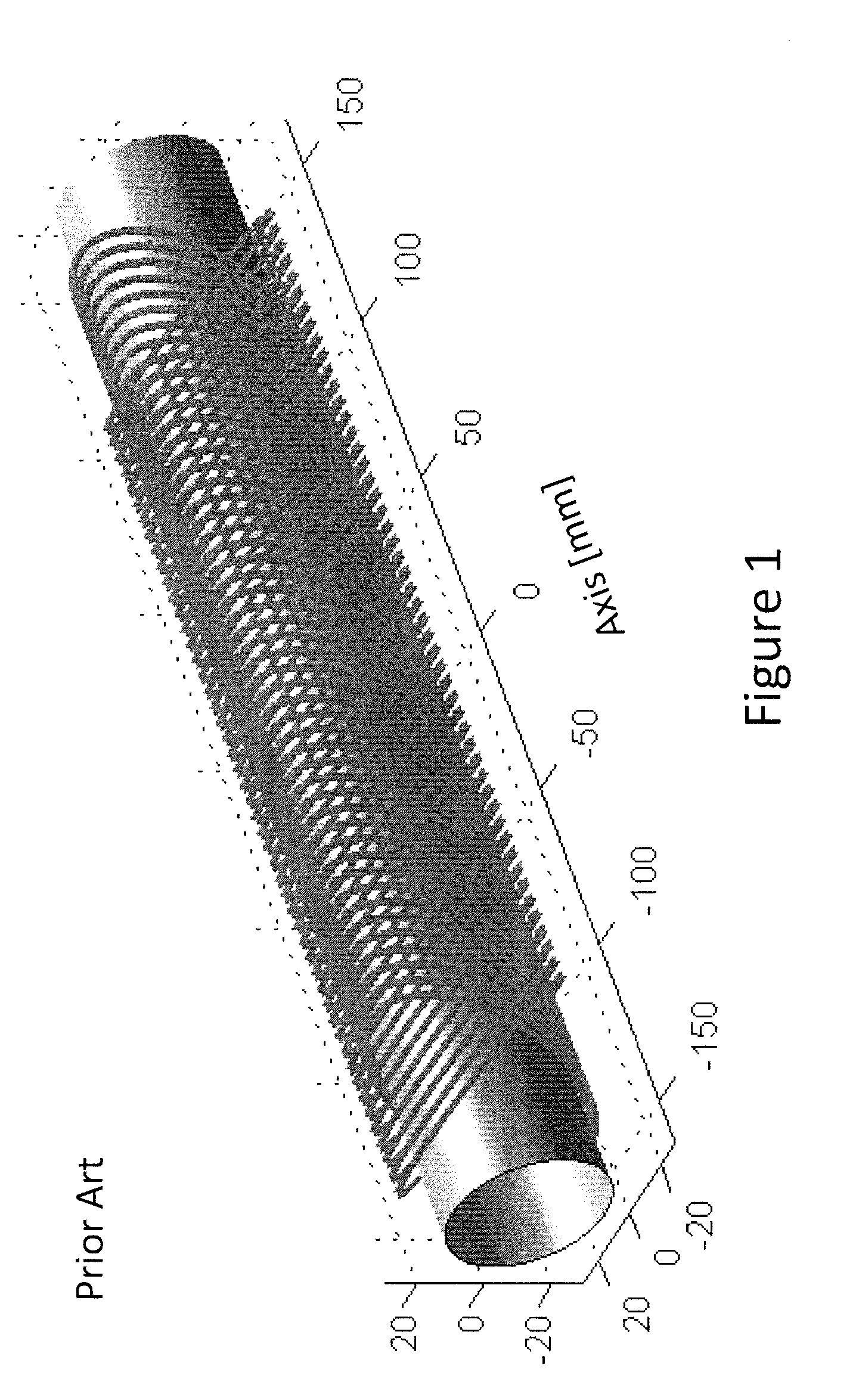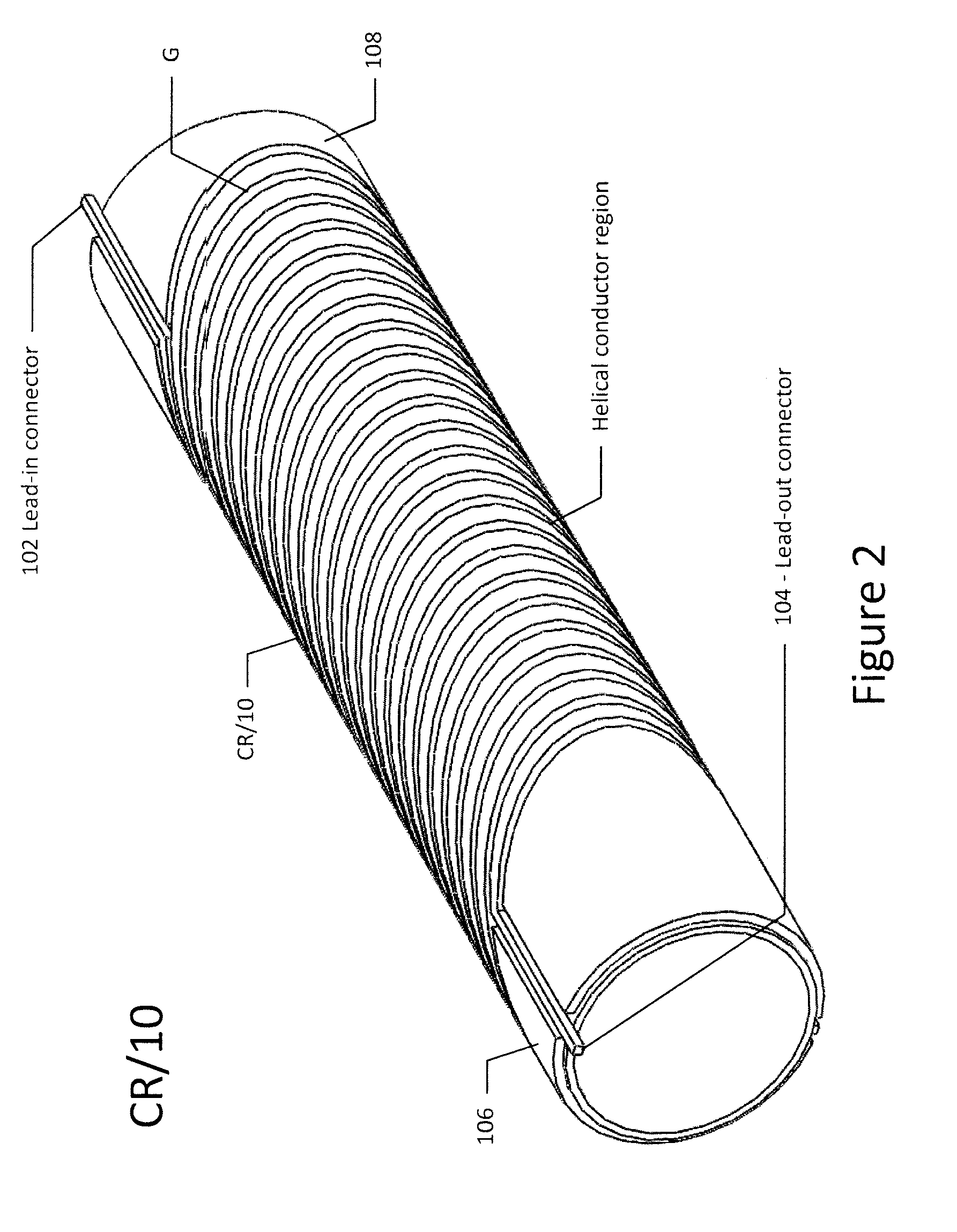Helical Coil Design and Process For Direct Fabrication From A Conductive Layer
a technology of conductive layer and helical coil, which is applied in the field of electromagnetic systems, can solve the problems of large size and cost of beam acceleration and focusing equipment, impediment to further deployment of these and other charged particle beam systems, and large area of cross sectional area, so as to reduce resistance and optimize field shape
- Summary
- Abstract
- Description
- Claims
- Application Information
AI Technical Summary
Benefits of technology
Problems solved by technology
Method used
Image
Examples
Embodiment Construction
[0038]Before describing in detail examples of inventive systems, components and methods, it is noted that features of the present invention include novel and non-obvious combinations of components and process steps. So as not to obscure the disclosure with details that will be readily apparent to those skilled in the art, certain conventional components and steps have been omitted or presented with lesser detail, while the drawings and the specification describe in greater detail other elements and steps pertinent to understanding the invention. Further, the following embodiments do not define limits as to structure or method according to the invention, and provide examples which include features that are permissive rather than mandatory and illustrative rather than exhaustive.
[0039]As used herein, the terms coil, spiral, helix and helical include but are not limited to regular geometric patterns. In addition, the terms coil, spiral and helix include configurations wherein a width (...
PUM
| Property | Measurement | Unit |
|---|---|---|
| Angle | aaaaa | aaaaa |
| Diameter | aaaaa | aaaaa |
| Magnetic field | aaaaa | aaaaa |
Abstract
Description
Claims
Application Information
 Login to View More
Login to View More - R&D
- Intellectual Property
- Life Sciences
- Materials
- Tech Scout
- Unparalleled Data Quality
- Higher Quality Content
- 60% Fewer Hallucinations
Browse by: Latest US Patents, China's latest patents, Technical Efficacy Thesaurus, Application Domain, Technology Topic, Popular Technical Reports.
© 2025 PatSnap. All rights reserved.Legal|Privacy policy|Modern Slavery Act Transparency Statement|Sitemap|About US| Contact US: help@patsnap.com



